Earth works and installations on the beach, Trivandrum, Kerala
Participating Artists : Azis T.M., children of fishing community, and C.F. John


The show was done with the collaboration of NFF ( National Fish workers Federation) . Azis and myself spent one week with the fishing community of Anjuthengu working towards the event. We selected twenty five children from a school of the community and worked with them conceptualizing the earth works and installation. Around 75 saplings of various species of mangrove trees were brought and placed as part of the earth works. Towards the end of the event, the saplings were taken by the children and walked across to the other shore of the island (backwater) and planted. Now there are around fifteen saplings that have survived and grown. We executed the work on the shore during the few hours between the low and high tide. Mangroves are quickly depleting from the coastal regions due to various reasons. This show aimed to inspire the fisher folk on the necessity of nurturing the mangroves.
C.F.John
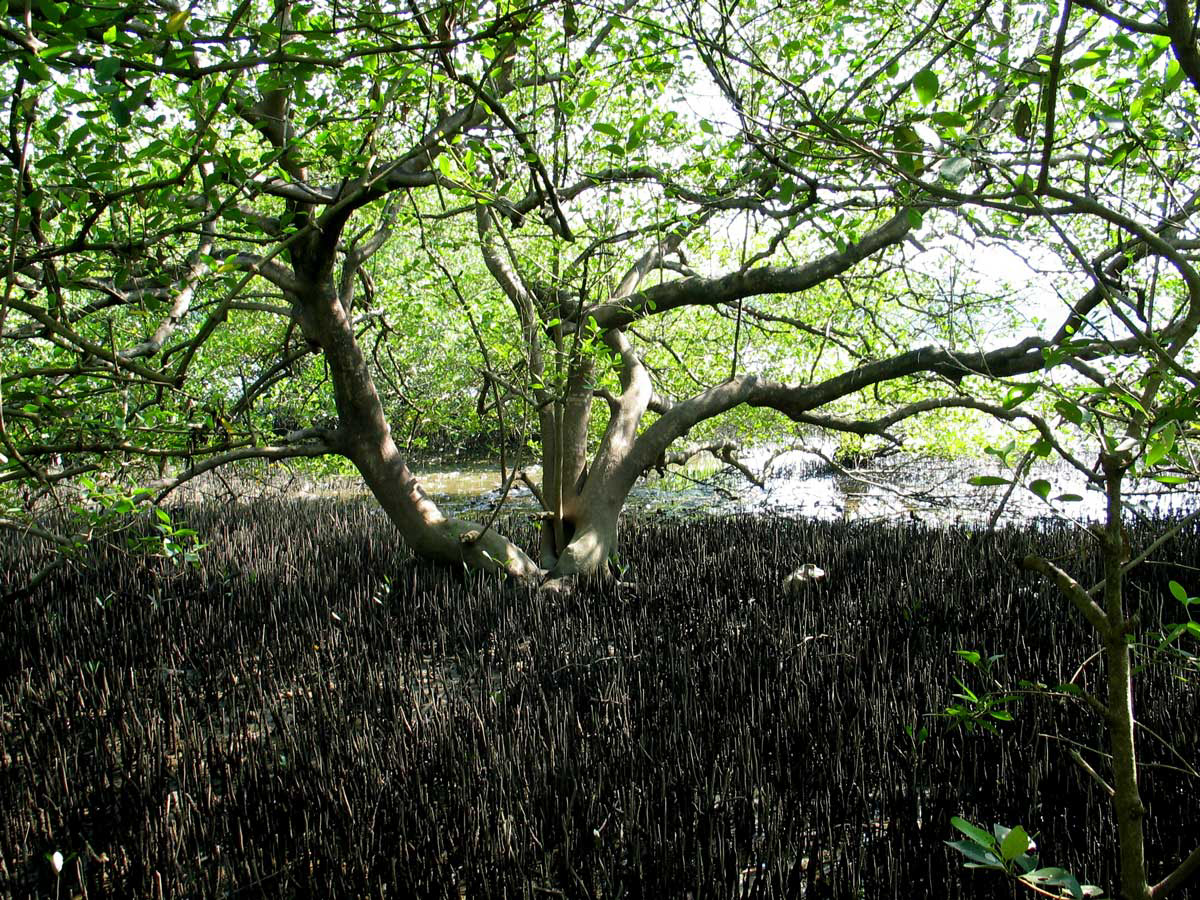
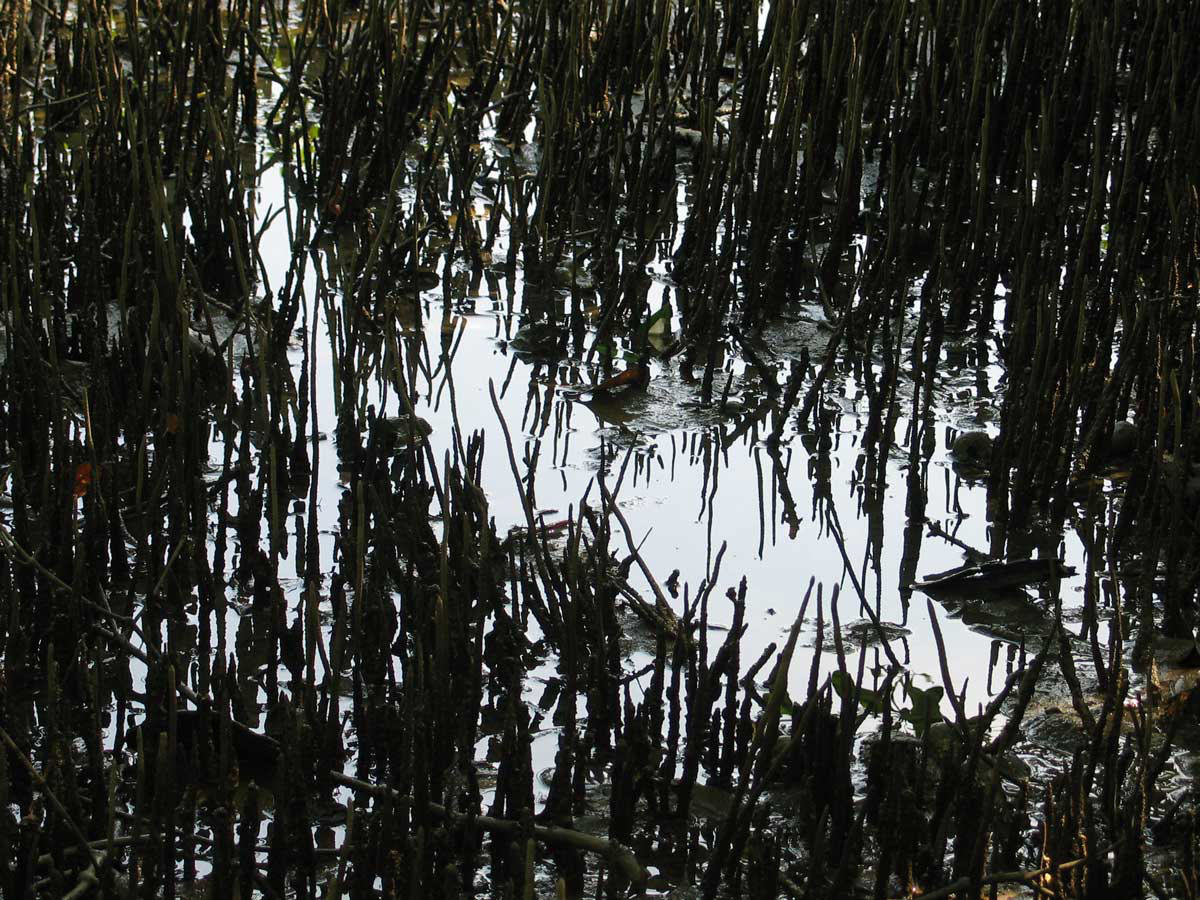
Mangroves 1 : size: 30ft x 8ft x 5ft ( approx), Medium: kattamaram, bandage cloth, colour threads, photographs and bamboo poles .
Mangroves 2: Size: 30ft x 30ft x 15 ft ( approx), Medium: earth, cloth, acrylic and bamboo pole.
Mangroves 3: Size : 40 ft x 40 ft x 5 ft ( approx), Medium: earth, cloth, acrylic and saplings.
Context
By way of different contexts, From 1986 onwards, I had many opportunities to connect with fisher folk from the coastal belt of Kerala. That year, I spent over two weeks with the fishing community in Kozhikode to understand their first and famous agitation against the use of trawling boats for fishing. Since then, as part of my relation with Visthar, I got to stay with them occasionally and also support their agitation in different ways.
I designed a couple of calendars, posters and a dossier documenting their struggle. In one of the conversations with Fr. Thomas Kocheri, the very dynamic leader of National Fishworkers Forum (NFF) and World Forum of Fish Harvesters and Fishworkers(WFF), I offered to do an exhibition to inspire the fishing community to nurture and protect mangroves in coastal Kerala. I wished the campaign would extend also to all other states in the country. As part of the show, we also planted about 75 saplings of mangrove trees of varying kinds on the banks of the backwaters, next to the sea shore.
It was during that time, I started feeling that our artistic interventions should not stand in an abstracted context of ideas, but rather connect with actual life context. For most concerns that find expression through art, there are communities making a corresponding struggle as part of their physical existence. To be supportive of these communities in their struggles, is also to preserve possibilities for, on the one hand, our common good, and on the other for art to root itself in its true meanings.
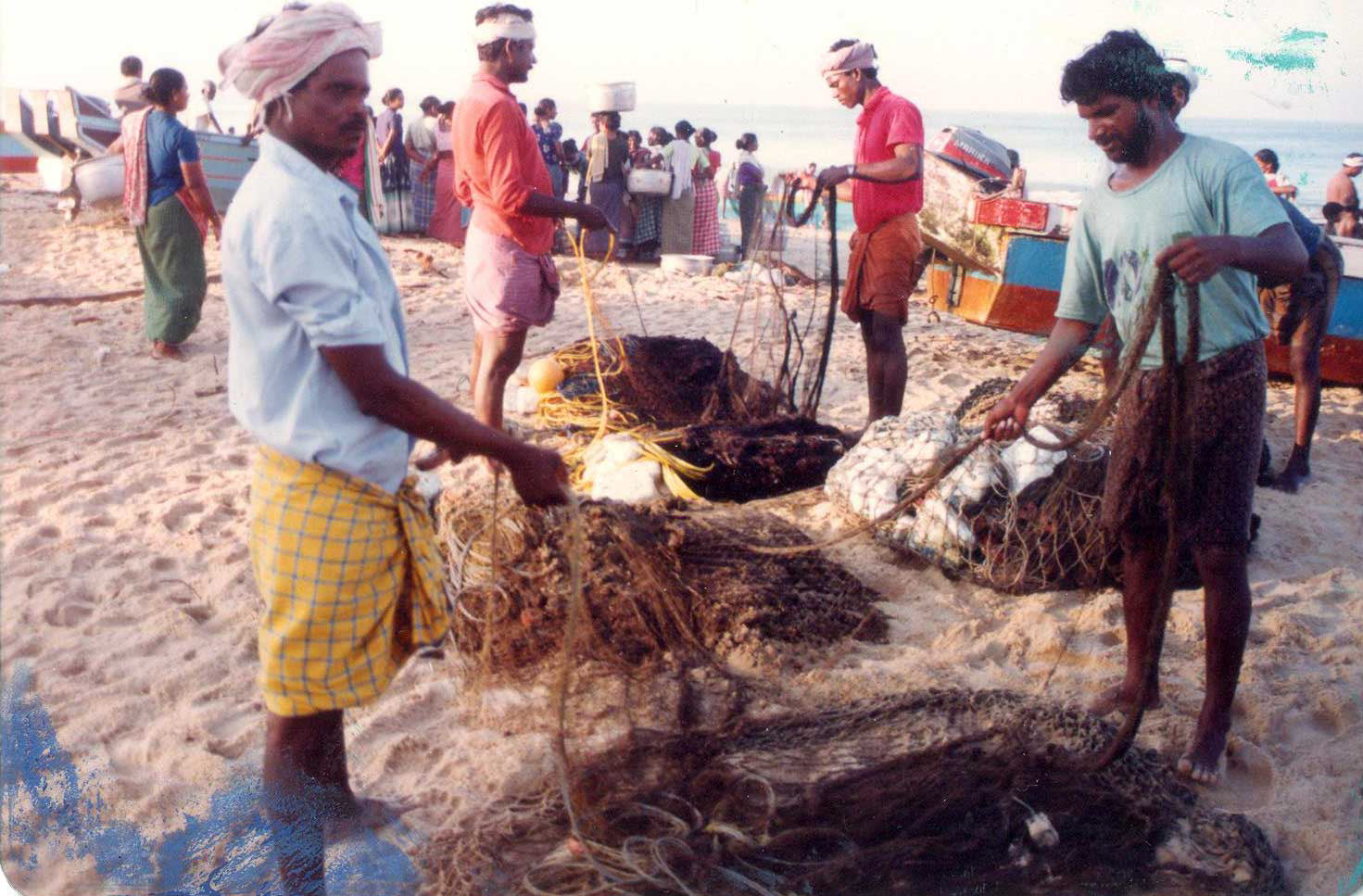
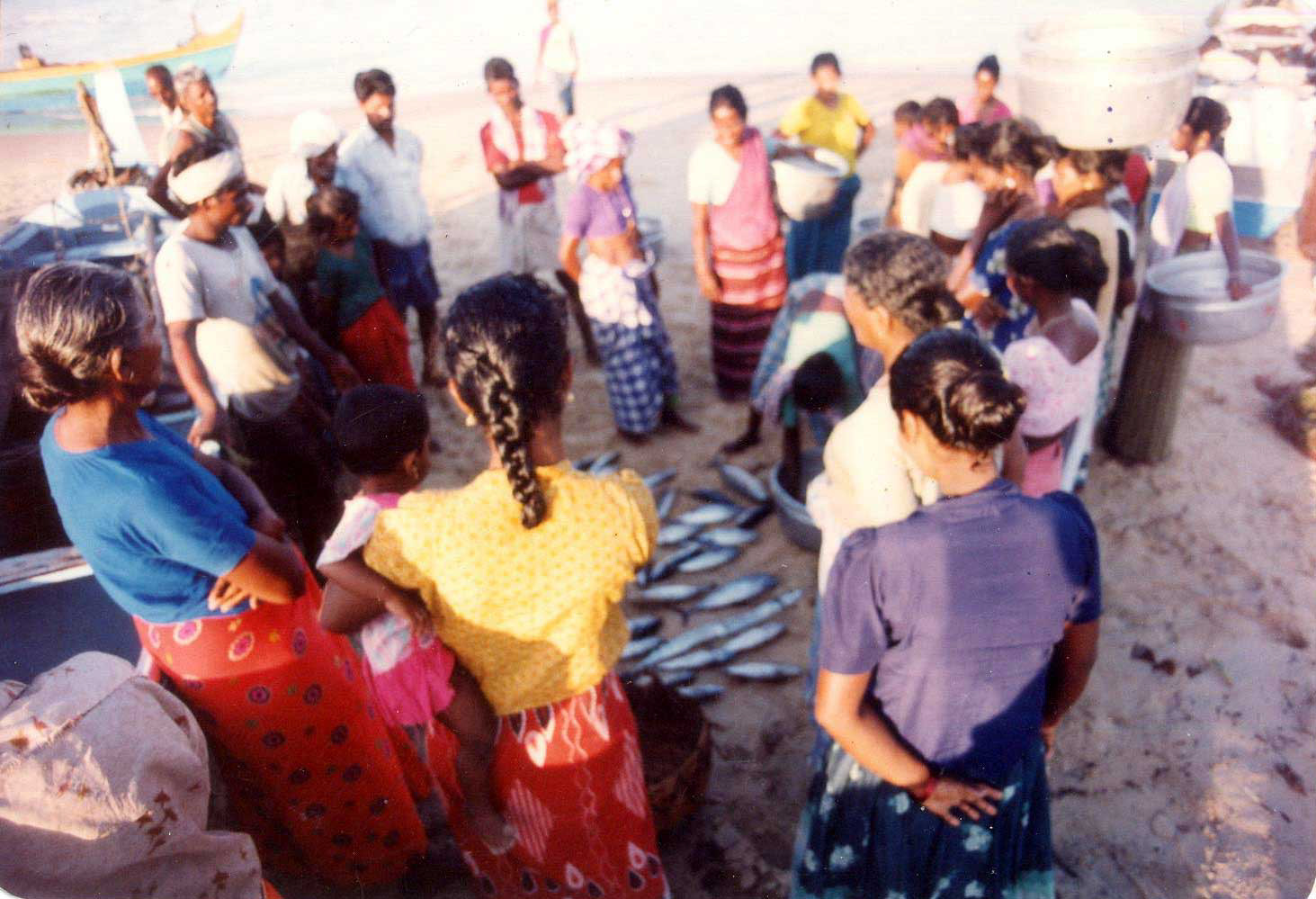
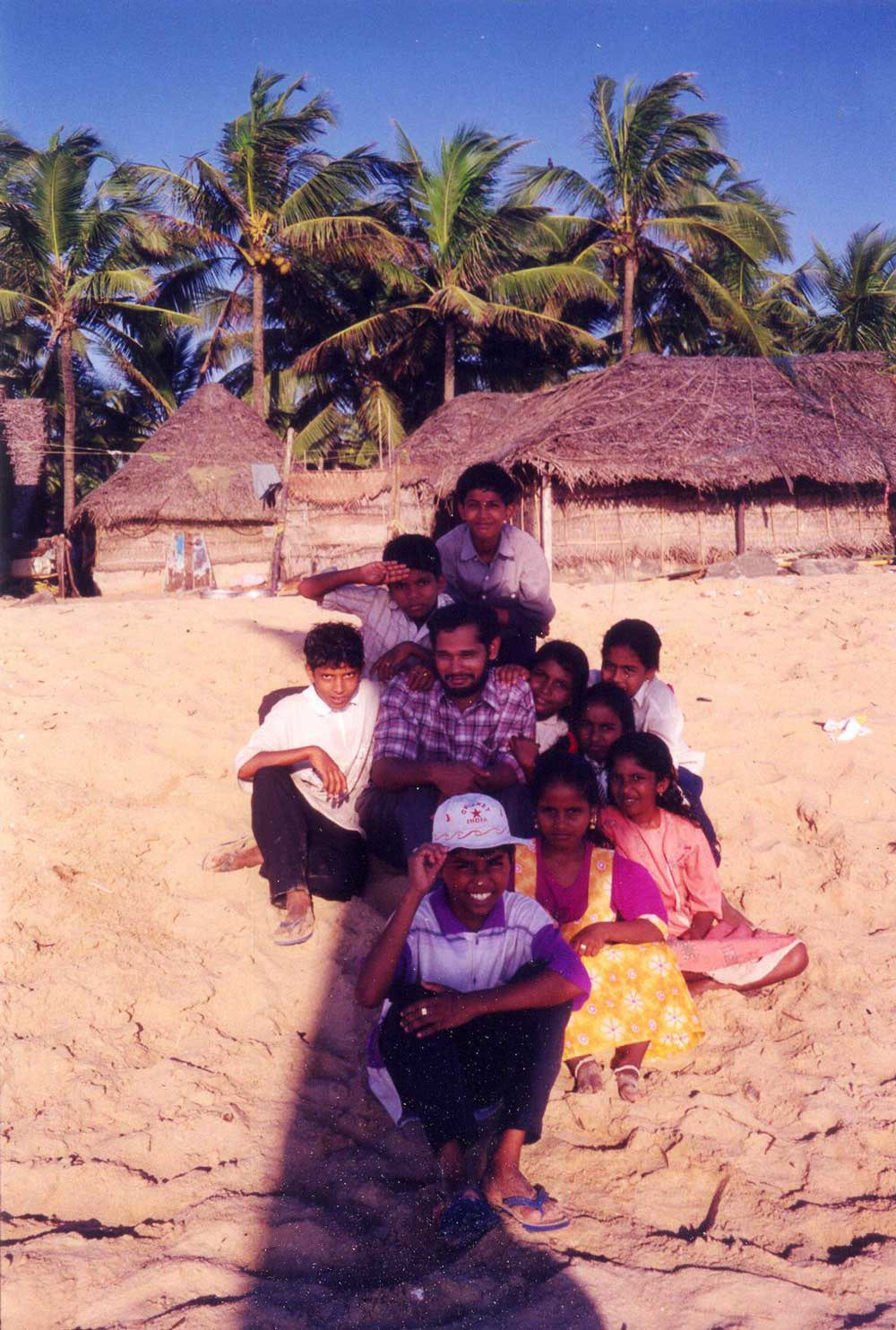

Challenges
Since the fishing communities had their own day-to-day struggles to focus on, with trawling and deep sea vessels and other daily concerns the campaign could not be expanded. Mangroves play a vital role in nourishing the ecosystem of the sea and also protecting shorelines and reducing the devastating impact of natural disasters such as tsunamis and hurricanes.The community efforts with a sense of responsibility, commitment and a vision, we could still do a lot to make the Earth healthier.
Today the state spends crores of rupees to make walls along the shore line, the intelligence of profit and absurdity continues.
Play and fight
Since Azis and I got the children to do the art works on the sand, most of it done with caring detail were destroyed as part of their play and fight.